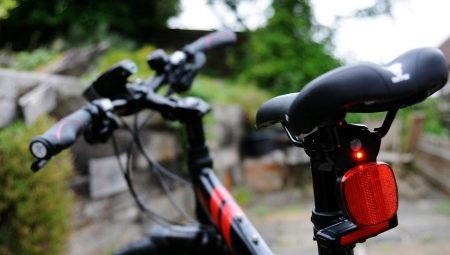One of the basic rules of road safety is to be visible to the rest of its participants. This is especially true of the dark. Street lamps, as a rule, do a poor job of their work, therefore ensure your visibility is an important task for every cyclist. Reflections on a bicycle make it easy to solve this problem, and the abundance of types of bicycle reflectors - also make your transport individual.
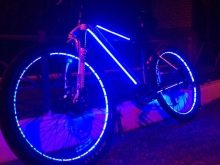
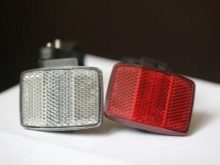

Purpose of reflectors
First of all, reflectors are needed to determine your presence on the road in low visibility conditions. It can be night, twilight, bad weather and more. The use of shiny and luminous reflectors will highlight you from the general background. They allow drivers of other vehicles to determine whether you are standing or driving, your driving direction and approximate speed, as well as your size. All this is necessary for the predictability of the situation on the road and an adequate reaction of the other road users to your actions.
Also, the use of unusual forms of reflectors and their mountings will allow you to make your bike individual. This will help you stand out from the everyday crowd, improve the mood of yourself and others. And it can also protect your bike from theft, since a noticeable instance will then be easier to find, and possible thieves understand this. Of course, reflectors are easy to remove, but with a high probability the hijacker will choose a less attractive model.



Selection of reflector type
Retroreflectors are divided into 2 classes - passive and active. Passive only reflects directional light from other sources. It can be car headlights, shop windows, street lights and more. These reflectors are lightweight, do not require a power source, but are practically useless in rain or fog, when it is difficult to get a direct ray of light on them. Such reflectors are made of colored glass or plastic. The latter are lighter in mass, less fragile and cheaper, but their reflectivity is somewhat lower.
Passive retro-reflectors can be selected if departures in the dark are rare, there are few cars, and the weather is nice.

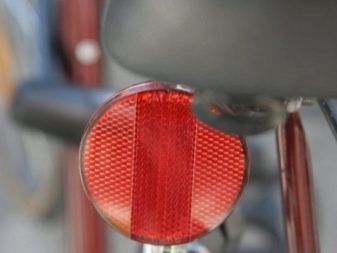
Active emit light themselves, they are great for difficult weather conditions and with frequent driving on public roads. Such reflectors require an energy source. Modern LED reflectors use current very economically. They are completely protected from water and dust. In addition, the light of such reflectors may be flashing, which will attract the attention of drivers not only at night, but also during the day.
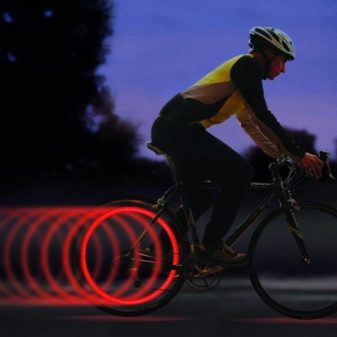
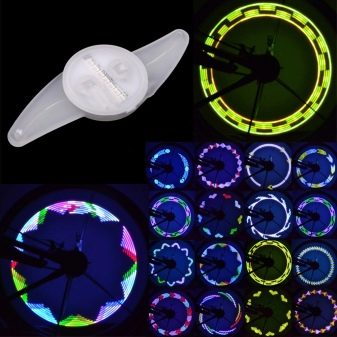
Flashing light is relevant when driving on congested streets or highways, when drivers pay little attention to bicycles. Typically, lights have built-in batteries or rechargeable batteries, and some are connected to a bicycle dynamo. This method of power supply is rarely used, since the glow only occurs when the wheel rotates and additional effort is required to rotate the generator. In addition, the dynamo increases the mass of the bike and reduces speed.
Active reflectors should be selected for frequent driving at dusk on public roads and in variable weather conditions, as well as with heavy traffic at any time of the day.
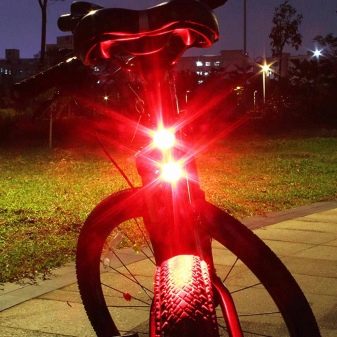
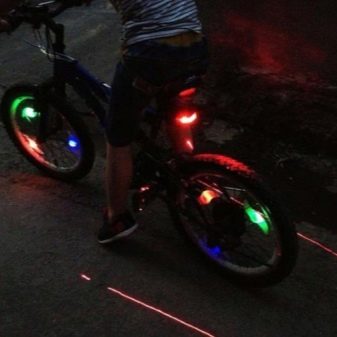
Requirements traffic rules for the installation of reflectors
Traffic regulations state that The use of reflective elements is mandatory. Wherein the front reflector should be white, the back should be red, and the side should be orange. This is necessary to clearly position the vehicle and prevent emergency situations.
A penalty is provided for the absence or improper installation of retro-reflectors.

Mounting options for bicycle reflectors
Depending on the design and imagination of the owner, Flashlights can be installed on virtually any part of your 2-wheel friend.
- White front reflectors can be installed on the steering wheel or in the steering glass with a special mount. The latter option is preferable, it allows you to reduce the number of elements on the steering wheel. You can also install a headlight that will not only inform about your approach, but also illuminate the road.
Only it should be bright enough, otherwise it will be of little use. For this reason, small flashlights are poorly suited for bicycles.
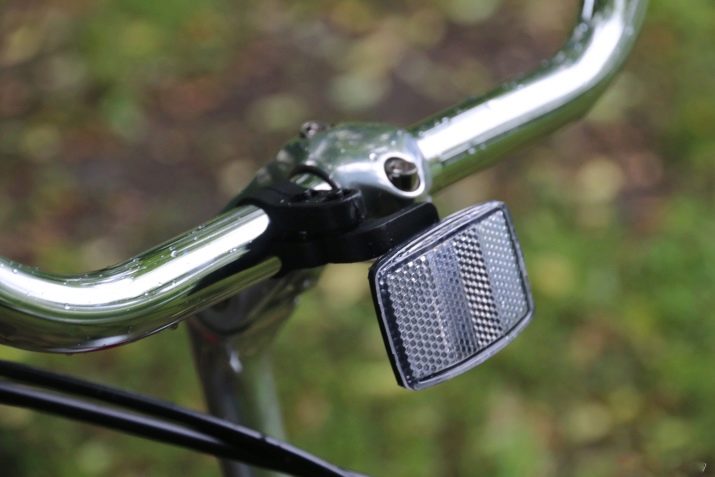
- Red back retroreflectors can be attached to the trunk or seatpost. The option of mounting on the wing is possible, but then it must be periodically wiped from dust. On the wing, the reflector can be more likely to be damaged, so sometimes it is closed with a special bracket.
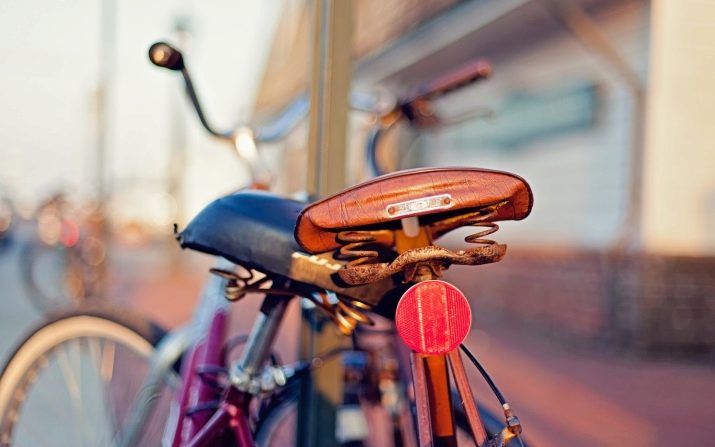
- Orange side reflectors usually mounted on wheels. Modern reflectors have already gotten rid of a large mass, leading to an unbalanced wheel. They are mounted on one or two spokes opposite the camera nipple, compensating for its insignificant mass. Some models are equipped with LEDs, which further increases the safety of night walks. In addition, during rotation, they create beautiful effects. There are very miniature designs wound around the spool of the camera. And most pedals are equipped with orange light reflectors.

With any installation method, it should be noted that reflectors must be visible. They must not be covered by bicycle components or transported goods. Also, they should be regularly cleaned from dust.This is especially true for reflectors mounted on wheels or rear wing.
Reflective elements
Some riders think that reflectors damage the look of the bike. Others want to lighten their vehicle as much as possible and sometimes remove these excess elements. In such cases, it is recommended to choose special reflective stripes that serve as a good alternative to conventional reflectors. Passive ribbons can be sewn onto clothing or equipment, and can be glued to a helmet or bicycle frame. In addition, they are often sewn into a bicycle uniform and bicycle backpacks. They have proven themselves well, not only cyclists can use them.
Reflective stripes are also active. They incorporate LEDs, which can be multi-colored. With their help, you can create a real illumination. In addition to aesthetic pleasure, these stripes greatly increase the safety of night trips. However, it is necessary to use a beautifully iridescent backlight carefully, as it distracts the attention of other road users. Some bicycle manufacturers use reflective paint, which prints the brand name and logo. In addition to additional advertising, this technique identifies the bike and allows you to do without reflectors. However, reflectors are still better placed on wheels.
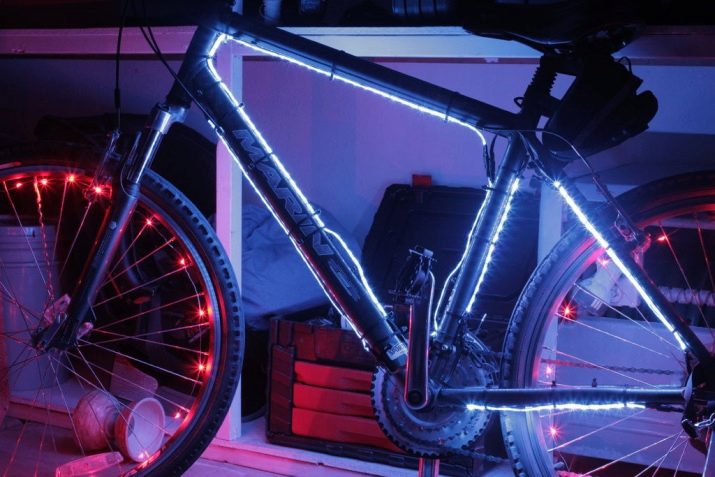
The basic rule when traveling on public roads is be predictable. Reflectors perfectly help identify you on the road and avoid misunderstandings. They should always be set if there is even a low probability of driving in the dark. This way you can avoid many unpleasant situations.
See how to install reflectors on a bicycle in the next video.
